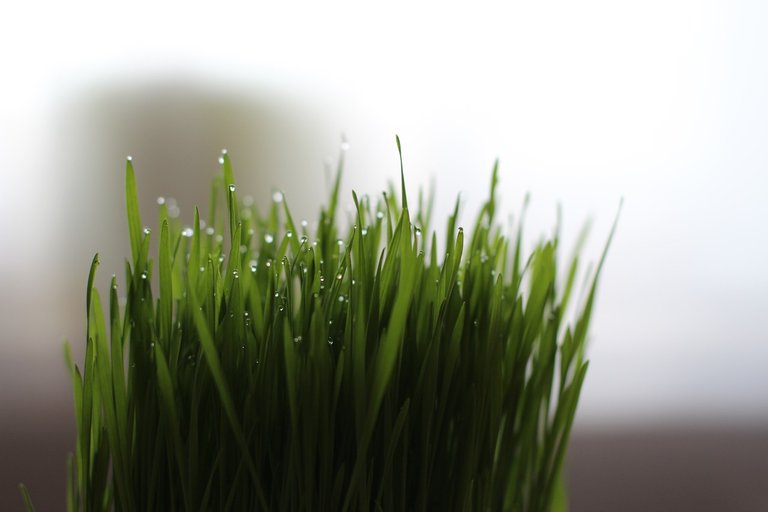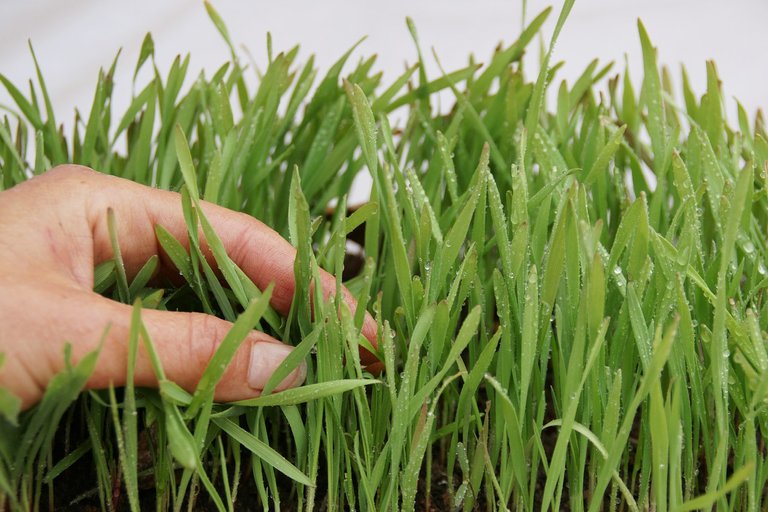
Many farmers today depend on grass to feed their livestock. And they don't always have an easy time in trying to meet their needs. A variety of issues might come up and contribute to difficulty when it comes to trying to acquire the grass that's needed. Common issues are things like a lack of space, cost, and weather problems.
However, these sorts of issues might soon become a thing of the past for many, thanks to a new initiatives that are using hydroponic growing methods and greenhouse technology for grass production.
These sorts of hydroponic systems have been used for some time in various countries to grow grass for cattle, though now researchers are using them and promoting their use for the production of large commercial scale amounts of grass that can be grown in a controlled greenhouse environment.

With their growing method, they are able to harvest grass all throughout the year, which helps farmers to combat weather issues that would prevent easy access. It also helps to cut down on cost by enabling farmers to produce their own rather than seek out feed from someone else. And they say that cows consuming the grass are able to produce roughly 10-15 percent more milk as a result.
The researchers involved with the experiment say that they don't see an alternative for the future when it comes to tackling such a project in trying to meet the nutritional needs of livestock.
Eventually, more commercial farmers will turn to this growing method to meet the grass-fed needs of their livestock.

Their technology is said to be the only one currently available on the market which provides for commercial scale growing of sprouts; a system that's also alleged to be immune to mold and mildew.
You can find farmers growing via hydroponic growing methods in a variety of countries around the world today: the US, UK, Canada, Nigeria, India, and elsewhere. And though it isn't a new growing method, having been known and used in some variety for a very long time, it's recently seen a surge in popularity in the past few years. And a variety of companies have now tried to make it easier for even consumers to start their own hydroponic systems right in the comfort of their own homes.
Right now the hydroponic space is estimated to be an industry worth hundreds of millions. It was estimated that it would reach around $400 million by 2020, but it's already seemed to have surpassed that. For 2017, it's estimated that the global hydroponics market was around $400 million and they expect that it will grow to something around $750+ million by 2022.
Many farmers are seeing this growing method as a much more convenient way to grow, a more cost-effective way to grow, and it's also shown to produce higher yields. If it continues to perform in showing better results to growers around the world, we can only expect this industry to continue to see healthy growth with more farmers turning to use hydroponics to possibly meet their needs.
Some of the more popular items that are being grown via hydroponic growing methods at the moment are things like cucumbers, tomatoes, lettuce, strawberries, and peppers. As well as being used to produce grass for livestock.

Pics:
Pixabay
Giphy
Sources:
http://www.ozy.com/fast-forward/new-england-is-cracking-the-code-to-farming-all-year-long/81249
https://news.virginia.edu/content/student-startup-turns-hydroponics-incite-food-revolution
https://bdnews24.com/business/2017/03/30/bangladesh-research-council-equipping-farmers-with-hydroponic-fodder-system
http://www.thedailystar.net/country/hydroponic-grass-meet-nutrition-needs-livestock-1475023
http://foddertech.com/about-us/
http://www.dw.com/en/nigeria-goes-hydroponic/av-40826232
https://www.entrepreneur.com/article/295531
http://www.hobbyfarms.com/is-hydroponically-sprouted-fodder-the-new-grassfed/
http://www.businesswire.com/news/home/20170927005560/en/Global-Hydroponics-Market-Research-Report-2017-2022--
https://steemit.com/food/@doitvoluntarily/hydroponics-market-expected-to-show-tremendous-growth-in-years-to-come
https://www.dezeen.com/2017/10/04/lokal-space-10-miniature-hydroponic-vertical-farm-london-design-festival/
Related Posts:
Hydroponics: New Life To An Old Way Of Growing
https://steemit.com/market/@doitvoluntarily/hydroponics-new-life-to-an-old-way-of-growing
So grass fed and free range will no longer mean the same thing?
I think I'll plant a bigger garden next year.
When I was growing up, my family did rotational grazing... in a cold climate. So I can definitely understand the appeal of growing grass year round. I imagine it would be labor intensive, because with grazing the animal goes to the grass and harvests it. With hydroponics, people (or robots) have to do the harvesting.
https://steemit.com/steem/@abdellkarim/1-upvote-1-commnt-2-resteem
Also, I doubt the nutritional value of hydroponics is the same as soil grown grass. It's still very interesting and I'm looking forward to more people experimenting with this.
@matthewdavid I feel that you may have a point there as most fertilizers in hydroponics are synthetic. However if this is done in an aquaponics system different rules apply. Grow fish and plants in a looped symbiotic system no better way exists to grow food..
https://steemit.com/nature/@craigcryptoking/aquaponics-the-big-system-build-mature-thriving-vegetables-pictures
very informative your...@doitvoluntarily
I am hearing so much about this lately, its an interesting subject :)
Perfect.
Advancement of technology for nature benefits , this is the next big thing
Great rephography article
Nice
And more importantly... Reduce. Meat. Consumption.
Humans can't digest grass very well... so hydroponically raised grass would be fed to animals.
No shit... Well I learn something every day. Thanks.
I often see cattle packed into spaces too tight for anything to grow, then they feed them corn. I've always wondered about viability of growing grass vertical. Like chia pet grow stacks, or sturdy shelving, would the cows graze on grass above their heads?
Excellent research and good idea thanks
Siempre es mejor lo natural!!
wow grate post ....i like this..
i have some post .....you can check
here @letsmakes
So informative. Great staff!
this will be a grat idea. i work in a green farm once. we plant tomato and we harvest all through the year. we dont depend on weather at all. hydroponics is the future
I am using Hydroponics at home. I wanted to explore the possibilities of this technology. I build simple Kratky Hydroponics setup and made this video:
The Kratky Method is a way of hydroponically growing your plants in a container without needing electricity or moving parts.
It seems there are solutions to all problems these days - it just needs the will - and the cash - to do it. What we are able to do, and what we are prepared to do, don't always match.
@doitvoluntarily So much information thanks for sharing.